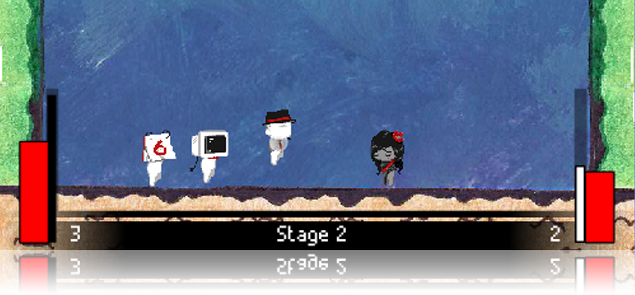Harmony
DOI:
https://doi.org/10.25071/1913-5874/37385Abstract
This is a platforming game about love and relationships. What this means will be conveyed through the rules and constraints of the game itself, as B. Laurel talks about in her article, Dramatic Techniques for Orchestrating Human Response. There are two characters you can switch between, whose genders are up to the player (boy, girl, and neutral). Both characters have to cooperate as a single unit, despite being controlled independently of each other. There is a focus on combat. The enemies will be representative of problems that interfere with the relationship, such as ‘apathy’, ‘distance’, ‘fear of commitment’, ‘career’, and so on.
By defeating them, the characters can ‘level up’. By doing so, they become strong enough to handle the constant scaling of difficulty as the game progresses. Importantly, the characters each advance separately. If one character is neglected, then both will. This will make it harder to survive the increasing difficulty of the game. You can never ‘win’. You just go for as long as you can. The rules are unusual, in order to be cause for reflection. The player should come to an interpretation of the game without need of a direct narrative. The character select screen is framed with the sentence, ‘I am a ____ seeking a____’, reminiscent of a dating site. This clues the player in on the relationship between the characters, without need of an intro.
The rules will be unusual, in order to be cause for reflection. The player should come to an interpretation of the game without need of a direct narrative. The character select screen is framed with the sentence, ‘I am a ____ seeking a ____’, reminiscent of a dating site. This clues the player in on the relationship between the characters. The game will not say exactly what it means, beyond a few hints (enemy names, introduction screen, etc.). This is to put emphasis on the player’s engagement, and to get them thinking. By reminding the player of their own possible relationships, and helping to bring them to their own conclusions, it can create a different kind of meaning for them than if it was just stated directly.
The game does not say exactly what it means, beyond a few hints (enemy names, introduction screen, etc.). This is to put emphasis on the player’s engagement, and get them thinking. By reminding the player of their own possible relationships, and helping to bring them to their own conclusions, it can create a different kind of meaning for them than if it was just stated directly. The idea that user and program ‘cooperate’, applied to a form of literary interpretation rather than simply interactivity, is the focus of this game. Not just working with the program to find out what you can do with it – working with it to find out what it ‘means’. The reason we chose relationships was because it is such a nuanced and personal subject, and more importantly, a lot of it defies language. The point of this game was to express something that defies expression. It’s an experiment to see just what this sort of thing can convey.





